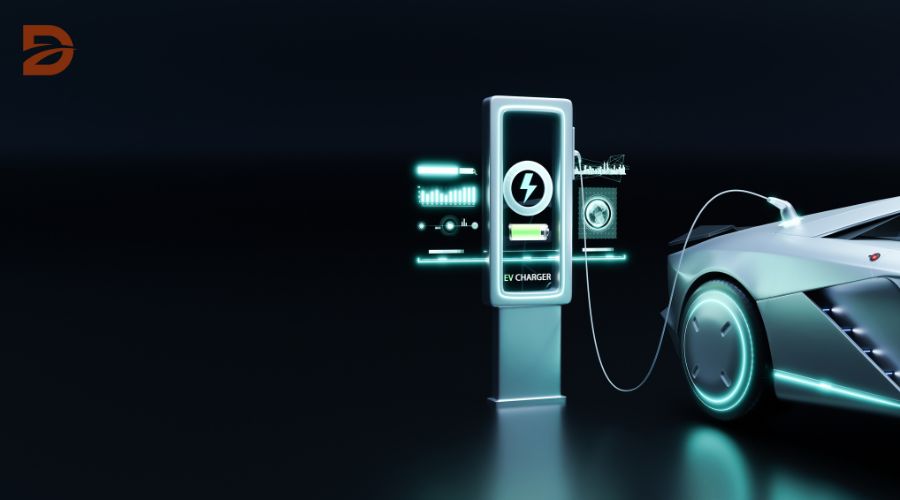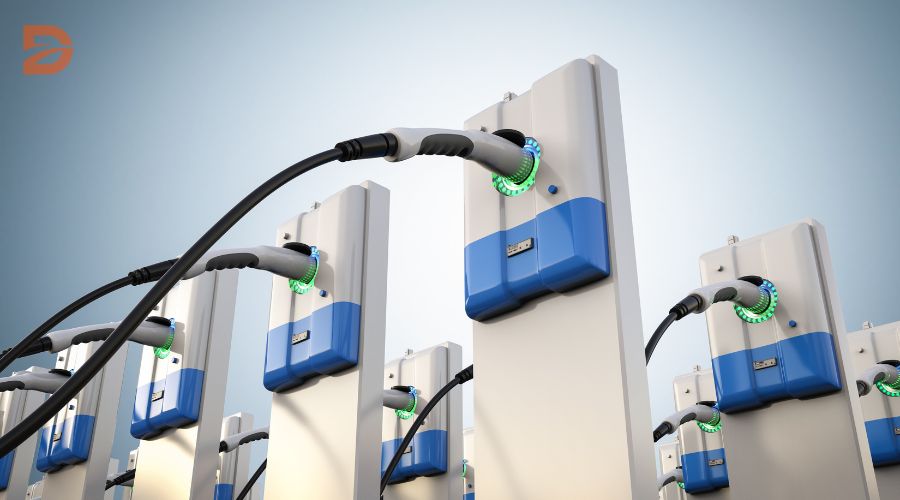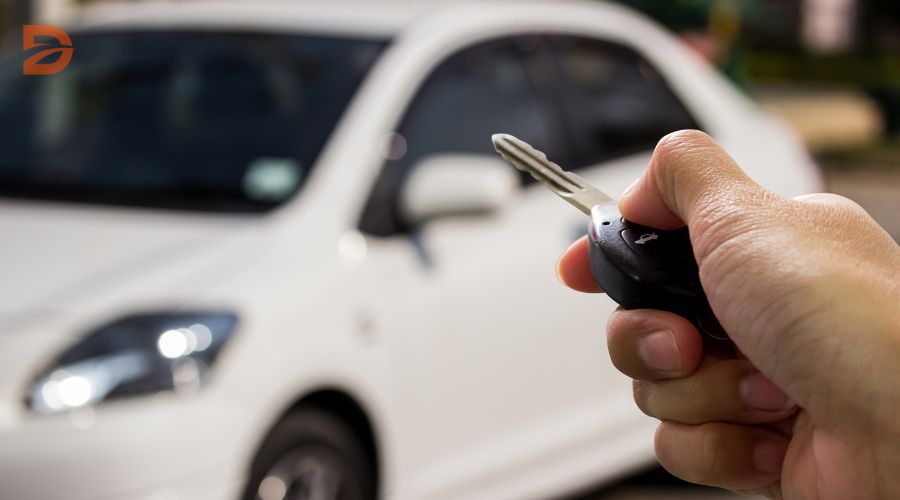Is your car’s battery giving you trouble? Don’t let a dead or underperforming battery leave you stranded. The right battery charger can be a game-changer, restoring depleted batteries and maintaining seldom-used batteries in peak condition. But with a wide range of options on the market, from $30 to $1,000, how do you know which charger is the best fit for your vehicle and driving needs? In this comprehensive guide, we’ll explore the top-rated car battery chargers for 2024, highlighting key features, compatibility considerations, and the differences between battery chargers and jump starters to help you make an informed decision.
Key Takeaways
- Investing in the right battery charger can help extend the life of your car’s battery and keep your vehicle running smoothly.
- Look for features like overcharge protection, automatic battery detection, and trickle charging modes to ensure your battery stays healthy.
- Compatibility with your car’s battery type is crucial, as different battery technologies like wet cell, AGM, and lithium-ion have unique charging requirements.
- Battery chargers and jump starters serve different purposes, so understanding the distinction can help you choose the right tool for the job.
- Charging modes and safety considerations are important factors to consider when selecting a car battery charger.
Battery Chargers: Essential for Vehicle Maintenance
Maintaining the health and longevity of your vehicle’s battery is crucial for ensuring a smooth and reliable driving experience. One of the most effective tools in your automotive arsenal is a quality battery charger. These essential devices play a vital role in restoring depleted batteries and keeping seldom-used batteries in working order.
Restore Depleted Batteries with the Right Charger
When a car battery becomes deeply discharged, it can start to accumulate lead sulfate crystals on its surface, a process known as sulfation. This condition can render the battery inoperable if left untreated. The right battery charger can help reverse this issue, reviving a dead battery and restoring it to its full capacity.
Maintain Seldom-Used Batteries in Working Order
For vehicles that are not driven regularly, such as classic cars or seasonal recreational vehicles, maintaining the battery’s charge is essential. Neglecting this task can lead to the battery slowly losing its charge over time, potentially leaving you stranded when you need to use the vehicle. By employing a battery maintenance charger, you can ensure your battery life is extended, and your vehicle is ready to start whenever you need it.
| Charging Rate | Voltage | Charging Modes |
|---|---|---|
| 2-amp, 10-amp, 12-amp, or 15-amp | 6 volts, 12 volts, 24 volts | Manual, Automatic, Trickle, Solar |
Investing in the right battery charger for your vehicle’s needs is a smart decision that can save you time, money, and the hassle of a dead battery. By restoring depleted batteries and maintaining seldom-used ones, you can ensure your car is always ready to hit the road.
Top-Rated Car Battery Chargers for 2024
When it comes to maintaining the health and performance of your car’s battery, investing in a reliable battery charger is essential. Based on expert reviews and rigorous product testing, several top-rated car battery chargers have emerged as the standouts for 2024. From the versatile and durable NOCO Genius PRO50 to the convenient Schumacher SC1309 combo, these chargers offer a range of features and capabilities to meet the diverse needs of car owners.
Schumacher SC1280: Best Overall Car Battery Charger
The Schumacher SC1280 is our pick for the best overall car battery charger, thanks to its reliable performance, automatic voltage detection, and overcharge protection. Priced at a reasonable $80, this charger is a great value for car owners who want a dependable and user-friendly option to keep their batteries in top shape.
NOCO Genius PRO50: Buy It for Life Car Battery Charger
For those seeking a top-of-the-line car battery charger, the NOCO Genius PRO50 is a standout choice. With its versatile compatibility, fast charging speeds, and high-quality construction, this charger is a “buy it for life” investment, earning a 4.5 out of 5.0 rating from reviewers. Its $900 price tag reflects its premium features and durability.
Schumacher SC1309: Best Battery Charger and Jump Starter Combo
The Schumacher SC1309 combines a charger and jump starter in one convenient unit, making it a great choice for car owners who want a multi-functional solution. Priced at $165, this all-in-one device can efficiently handle various charging tasks and provide a reliable jump start when needed.
TOPDON Tornado 30000: Most Versatile Car Battery Charger
For car owners with diverse battery needs, the TOPDON Tornado 30000 stands out as the most versatile car battery charger on the market. With its ability to handle a wide range of battery types and vehicle applications, this $300 charger is a flexible and high-performing option that earned a 4.5 out of 5.0 rating from reviewers.
Key Features to Look for in a Car Battery Charger
When selecting a car battery charger, it’s essential to consider key features that can enhance its utility and safety. Two crucial aspects to look for are overcharge protection and automatic battery detection.
Overcharge Protection and Automatic Battery Detection
Overcharging a battery can lead to harmful effects, potentially causing rapid disassembly and resulting in damage or battery failure. Chargers with overcharge protection mechanisms prevent this by automatically shutting off the charging process when the battery reaches full capacity. Automatic battery detection is another valuable feature, as it allows the charger to identify the battery type and adjust the charging process accordingly, ensuring optimal charging efficiency and safety.
Trickle Charging and Desulfation Modes
- Trickle charging is particularly useful for maintaining the health of batteries that are not used frequently, such as those in motorcycles, ATVs, lawnmowers, and vehicles that may sit idle for extended periods. This gentle charging mode helps keep the battery in optimal condition without overcharging.
- Desulfation modes can be a game-changer for reviving batteries affected by sulfation, a common issue that occurs when a battery is left uncharged for too long. These specialized modes help break down the sulfate crystals that can build up on the battery plates, restoring the battery’s capacity and extending its lifespan.
By prioritizing car battery charger features like overcharge protection, automatic battery detection, trickle charging, and desulfation modes, you can ensure your vehicle’s battery stays in peak condition, providing reliable starting power and prolonging its overall lifespan.
Battery Chargers vs. Jump Starters: Understanding the Difference
When it comes to vehicle maintenance, having the right tool for the job can make all the difference. Two essential devices in this realm are battery chargers and jump starters. While they may seem similar, these tools serve distinct purposes and offer unique benefits.
Battery Chargers are designed to gradually restore a depleted battery’s charge. They provide a steady, lower-amperage current that helps replenish the battery over time. This gentle approach is ideal for maintaining seldom-used batteries or reviving weakened ones. In contrast, Jump Starters deliver a powerful, high-amperage surge of electricity to quickly start a dead battery, making them better suited for emergencies.
Some battery chargers, like the Schumacher SC1309, can function as both a charger and a jump starter, offering the best of both worlds. Knowing the difference between these devices can help you choose the right tool for your vehicle maintenance needs.
| Feature | Battery Chargers | Jump Starters |
|---|---|---|
| Charging Method | Steady, low-amperage current | Powerful, high-amperage surge |
| Charging Time | 24-48 hours | Instant |
| Suitable for | Maintenance and recharging | Emergency jump-starting |
| Portability | Typically not as portable | Lightweight and portable |
| Additional Features | Trickle charging, desulfation modes | USB charging, flashlight |
| Price Range | $$-$$$$ | $-$$ |
By understanding the differences between battery chargers and jump starters, you can make an informed decision on the right tool for your vehicle maintenance needs. Whether you’re looking to maintain a seldom-used battery or need a quick fix in an emergency, there’s a solution tailored to your requirements.
Battery chargers, vehicle maintenance: Compatibility Matters
When it comes to maintaining your car’s battery, choosing the right battery charger is crucial. Not all chargers are compatible with every type of car battery, and using the wrong one can potentially cause damage. Understanding the common car battery types and their compatibility with various chargers will help ensure your vehicle stays powered up and running smoothly.
Common Car Battery Types and Compatibility
The most common car battery types include:
- Wet cell batteries, the traditional lead-acid batteries found in many older vehicles
- Absorbed Glass Mat (AGM) batteries, which are maintenance-free and better suited for modern vehicles
- Gel cell batteries, known for their spill-proof and vibration-resistant design
- Lithium-ion batteries, a newer, high-performance option gaining popularity in some cars
While many battery chargers are compatible with wet cell, AGM, and gel cell batteries, not all are rated for use with lithium-ion batteries. Ensuring your charger matches your vehicle’s battery type is crucial to avoid potential damage or safety issues.
For example, the NOCO GENIUS PRO50 charger is compatible with wet cell, AGM, and gel cell batteries, as well as lithium-ion batteries, making it a versatile choice. On the other hand, the TOPDON TORNADO4000 is designed primarily for wet cell, AGM, and gel cell batteries, but may not be the best option for lithium-ion-powered vehicles.
By understanding the battery types in your car and selecting a compatible charger, you can keep your vehicle’s power source in top condition and extend its lifespan.
Charging Modes and Safety Considerations
When it comes to keeping your car’s battery in top shape, the right charging modes and safety practices are essential. Car battery chargers often offer different charging modes, such as trickle charging and desulfation modes, to address various battery maintenance needs. However, it’s crucial to use these modes correctly and monitor the charging process to avoid potential safety issues.
Overcharging a battery or experiencing significant voltage fluctuations can lead to permanent battery damage and pose a fire hazard. According to industry experts, improper charging practices are one of the most common reasons for a dead battery, where both overcharging and undercharging can significantly reduce a battery’s lifespan.
To ensure safe and effective charging, it’s recommended to disconnect the car battery before charging it. When selecting a charger, choose one that matches the specific requirements of your car’s battery, as using the wrong charger can lead to issues like sulfation, which can diminish the battery’s capacity and performance.
Additionally, it’s crucial to follow the manufacturer’s instructions and safety guidelines when using a car battery charger. This includes selecting the appropriate charging settings, monitoring the charging process, and being mindful of the potential production of hydrogen gas, which can cause explosions under certain conditions.
- Disconnect the battery before charging to minimize safety risks.
- Choose a charger that is compatible with your car’s battery type and capacity.
- Follow the manufacturer’s instructions and safety guidelines during the charging process.
- Monitor the charging progress and avoid overcharging the battery.
- Be cautious of hydrogen gas production, which can pose an explosion hazard.
By understanding the charging modes and safety considerations, you can keep your car’s battery healthy and extend its lifespan, ultimately saving you time and money on costly battery replacements.
Conclusion
Investing in a quality car battery charger is an essential part of maintaining your vehicle’s health and ensuring reliable starting power. By understanding the features to look for, such as overcharge protection and automatic battery detection, as well as the differences between chargers and jump starters, you can select the right charger to restore depleted batteries, maintain seldom-used batteries, and keep your car running smoothly.
Compatibility is key when it comes to car battery chargers, so be sure to choose a model that is compatible with the specific type of battery in your vehicle. Whether you have a lead-acid, calcium-calcium, AGM, or EFB battery, the right charger can help extend its lifespan and ensure reliable starting power, even in extreme temperatures.
Remember, proper maintenance and safety practices are crucial when using a car battery charger. Follow the manufacturer’s instructions carefully, and avoid charging non-rechargeable, damaged, or dead batteries to prevent damage to the charger. By investing in a quality car battery charger and using it responsibly, you can help keep your vehicle’s battery healthy and ensure your car is always ready to start when you need it.
FAQ
What are the key benefits of using a car battery charger?
Car battery chargers offer two key benefits: restoring depleted batteries and maintaining seldom-used batteries in working order. Chargers can revive dead batteries and prevent sulfation, a process where lead sulfate crystals build up on the battery’s surface, rendering it inoperable. Additionally, regularly maintaining batteries that are not frequently used can extend their lifespan, ensuring your vehicle is ready to start when needed.
What are some of the top-rated car battery chargers for 2024?
Based on expert reviews and product testing, some of the best car battery chargers for 2024 include the Schumacher SC1280, NOCO Genius PRO50, Schumacher SC1309, and TOPDON Tornado 30000. The Schumacher SC1280 is the best overall charger, offering reliable performance, automatic voltage detection, and overcharge protection at a reasonable price. The NOCO Genius PRO50 is a top-of-the-line charger with versatile compatibility, fast charging speeds, and high-quality construction. The Schumacher SC1309 combines a charger and jump starter in one unit, while the TOPDON Tornado 30000 is the most versatile charger, suitable for a wide range of battery types and vehicle applications.
What key features should I look for in a car battery charger?
When selecting a car battery charger, look for features that can improve its utility and safety, such as overcharge protection, automatic battery detection, trickle charging modes, and desulfation modes. Overcharge protection and automatic battery detection are important to prevent damage to your vehicle’s battery. Trickle charging modes help maintain batteries that are not frequently used, while desulfation modes can help revive batteries affected by sulfation. These advanced features can extend the lifespan of your car’s battery and ensure reliable starting power.
What is the difference between a car battery charger and a jump starter?
The main difference between a car battery charger and a jump starter is the way they replenish a battery’s power. A battery charger provides a steady, lower-amperage current to gradually restore a battery’s charge, while a jump starter delivers a powerful, high-amperage surge of electricity to quickly start a dead battery. Some chargers, like the Schumacher SC1309, can function as both a charger and a jump starter, offering the best of both worlds.
How do I ensure I choose a car battery charger that is compatible with my vehicle?
When selecting a car battery charger, it’s essential to choose one that is compatible with your vehicle’s battery type. Common car battery types include wet cell, absorbed glass mat (AGM), gel cell, and lithium-ion. While many chargers are compatible with wet cell, AGM, and gel cell batteries, not all are rated for use with lithium-ion batteries. Ensuring your charger matches your battery type is crucial to avoid potential damage or safety issues.
What safety considerations should I keep in mind when using a car battery charger?
Car battery chargers often offer different charging modes, such as trickle charging and desulfation modes, to address various battery maintenance needs. However, it’s important to use these modes correctly and monitor the charging process to avoid potential safety issues. Overcharging a battery or experiencing significant voltage fluctuations can lead to permanent battery damage and pose a fire hazard. Always follow the manufacturer’s instructions and safety guidelines when using a car battery charger.










